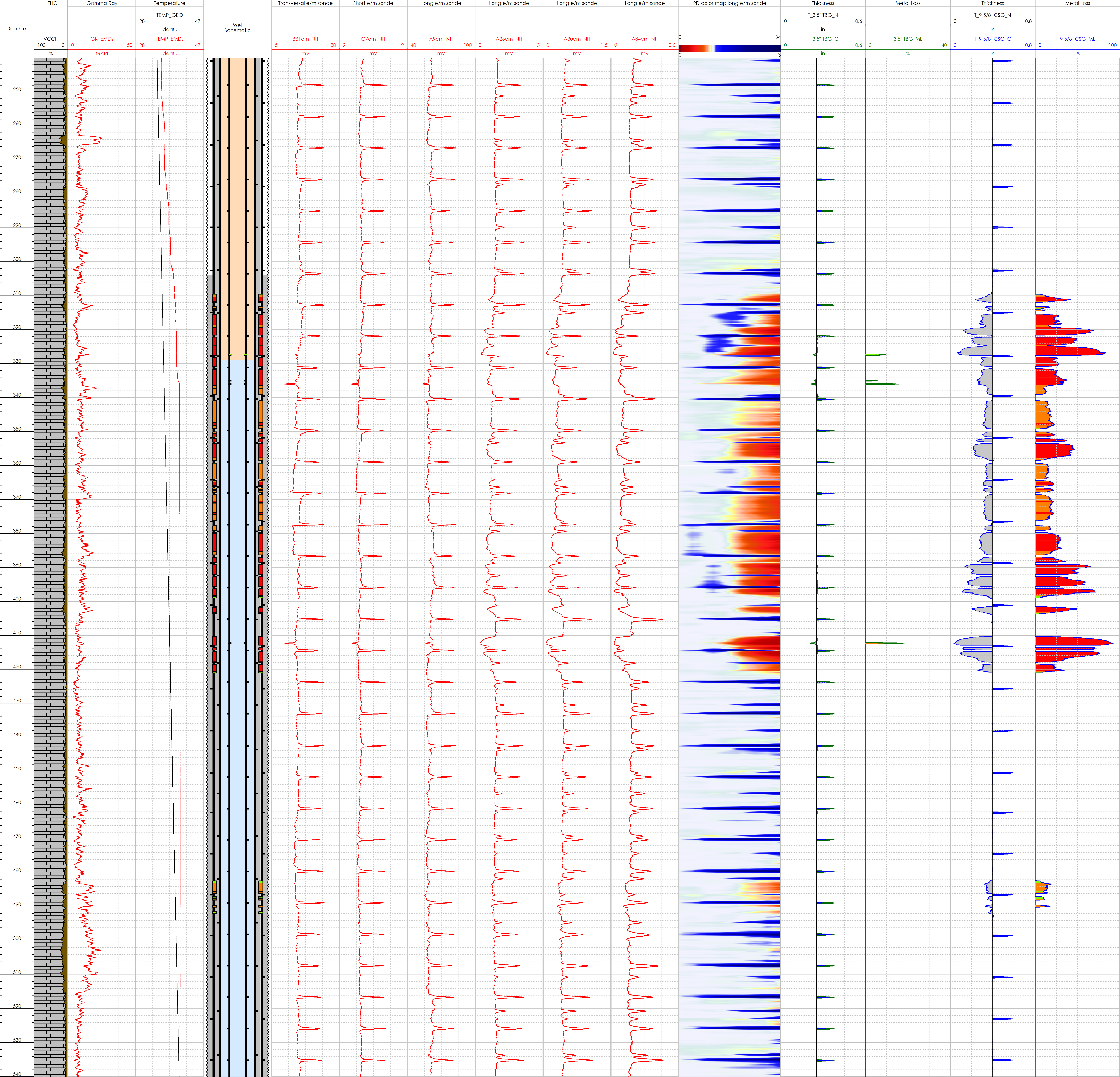Integrity Challenge
Ensuring a strong cement bond in the annulus is crucial and one of the effective methods to achieve this is by utilizing a multistage packer and ensuring proper centralization. Additionally, an external coating on the inner pipe can reduce the risk of corrosion migration from the outer pipe to the inner pipe. This becomes particularly critical when the outer annulus had a poor cement job with little or no cement while being exposed to a corrosive aquifer. The potential failure of multiple barriers in this scenario can have severe consequences, including the occurrence of an oil leak to the surface. These leaks can result in harm to personnel, the environmental, the asset and the reputation of the company.
Corrosion Logging Result
One example when corrosion logging was conducted and multi barrier metal loss on the outer casing and inner casing was detected is shown below:
The well is a deviated oil producer drilled in 2015. After drilling the well was completed with a 9 5/8” cemented surface casing with the top of cement (TOC) at 304 m and a 7” cemented production casing with TOC at surface. A 3.5” ESP completion string was run. At the beginning of 2022 the production rate suddenly dropped with no indication of a pump failure. The well was suspended pending further investigation.
In April 2022 EMDs corrosion logging was conducted.
The EMDs log data indicated that the 9 5/8” surface casing had an extended corroded interval with a maximum metal loss of 95%. The corroded interval was located across cemented casing and started from the TOC. It is probable that the cement is of poor quality and the TOC is deeper than predicted.
In addition to surface casing corrosion, 3 intervals of localized metal loss were detected in the completion string. This was evident from the clear response from the transversal and short e/m sondes which log the first barrier only with high resolution. The shape of the recorded curves indicated the presence of through wall defects i.e., holes. In all probability these holes allowed produced fluid circulation into the annulus and possibly causing the decline in production. The temperature curve confirmed the interpretation as it showed crossflow from 336 m where holes in the tubing had been identified.
Based on the corrosion log result the well was worked over and returned to production. In addition, it was recommended to include the well in a corrosion monitoring plan as the corrosion rate was aggressive. In only 7 years the corrosion rate had reached almost 100% in the surface casing. There is also uncertainty with the quality of the cement behind production casing which could lead to corrosion migration to the production casing.
All case studies
Looking for more information?
Get in touch with us and our representative will get back to you
Contact Us



